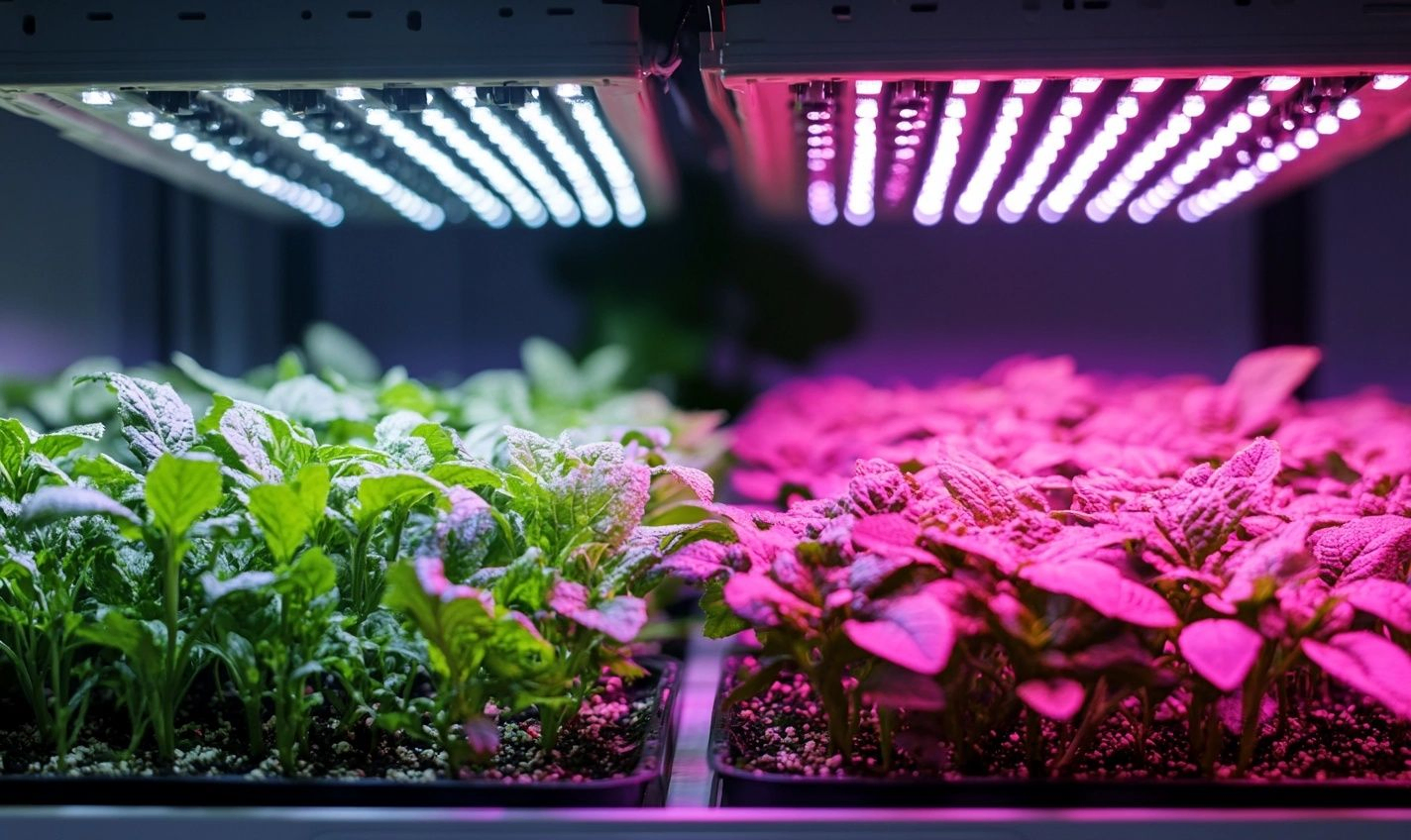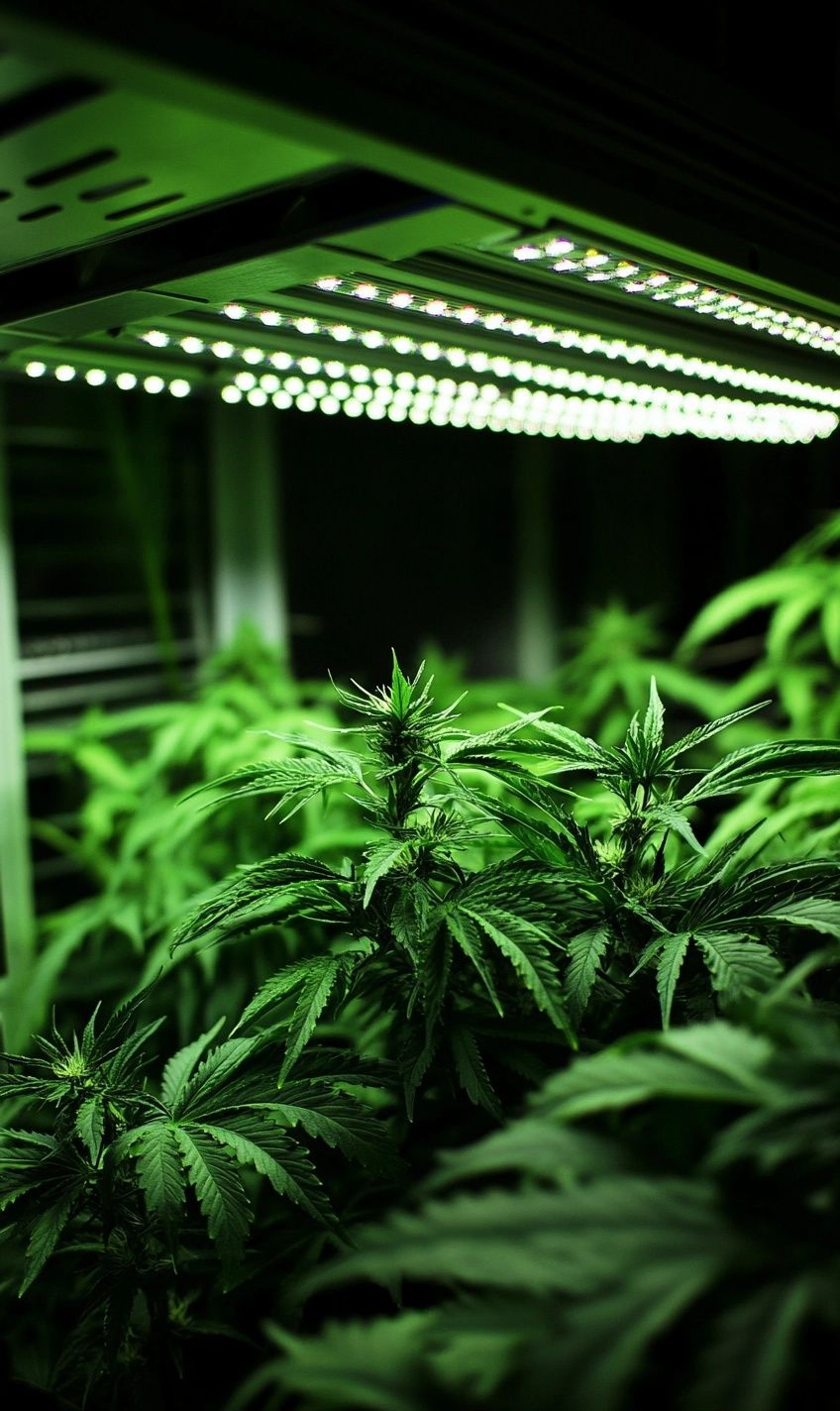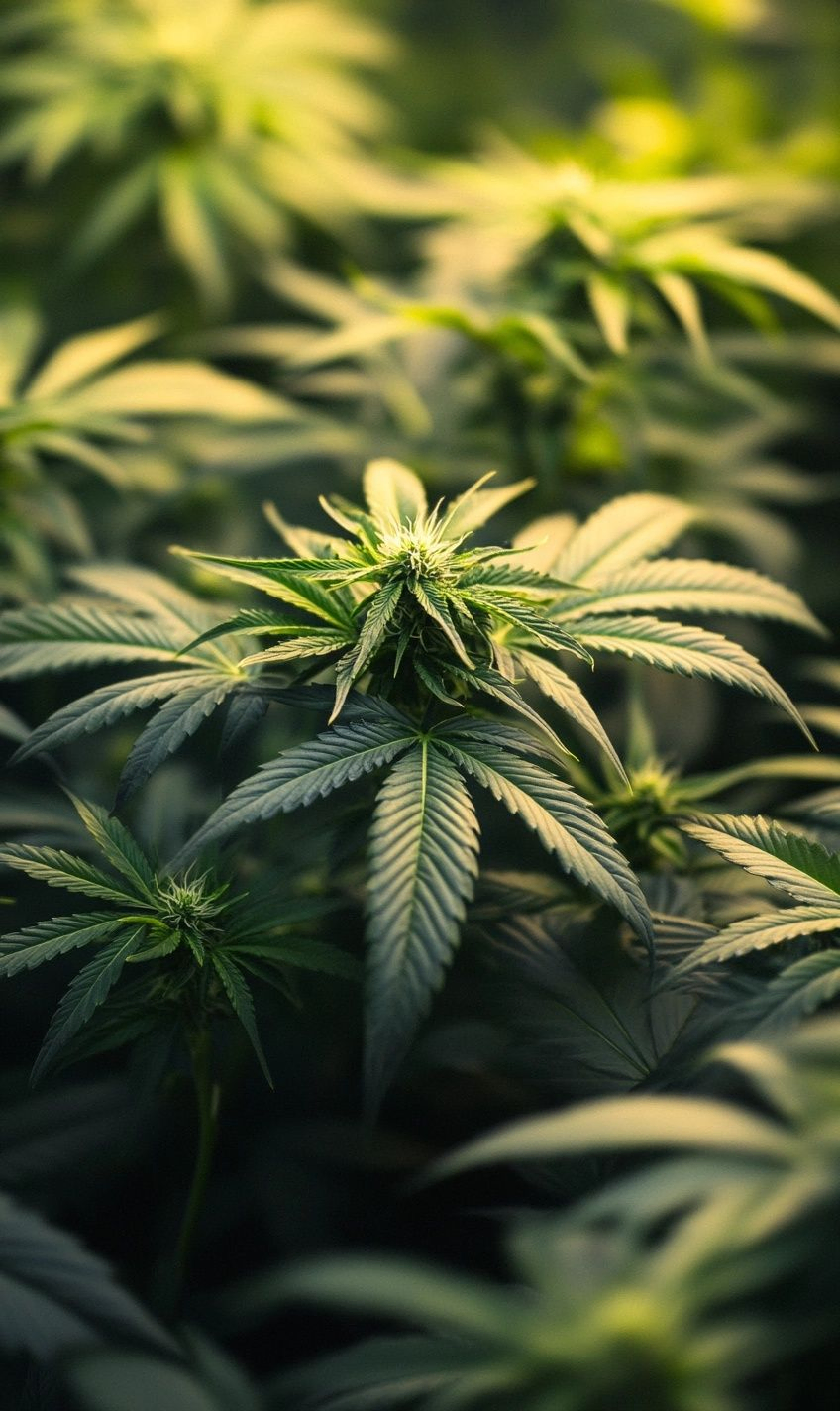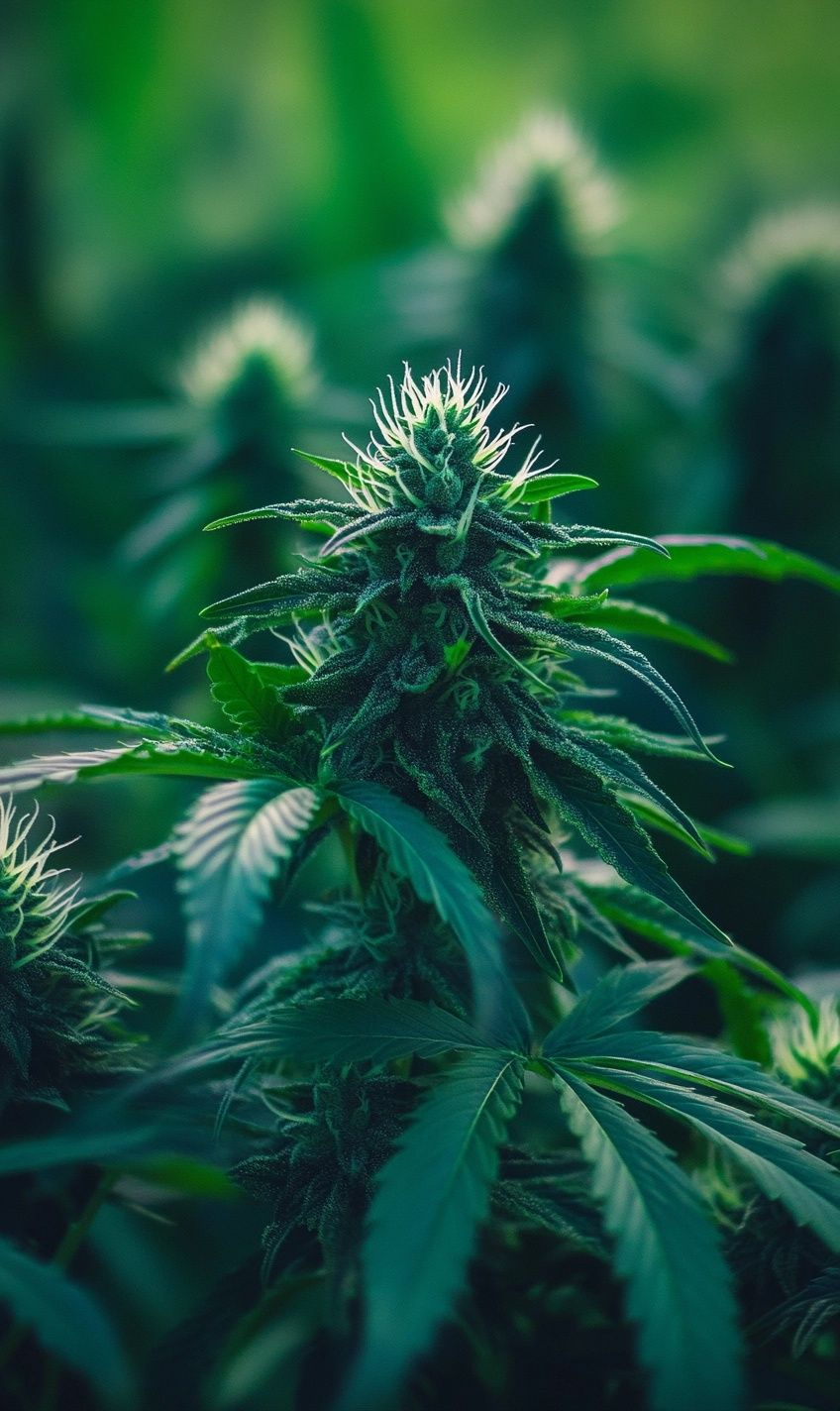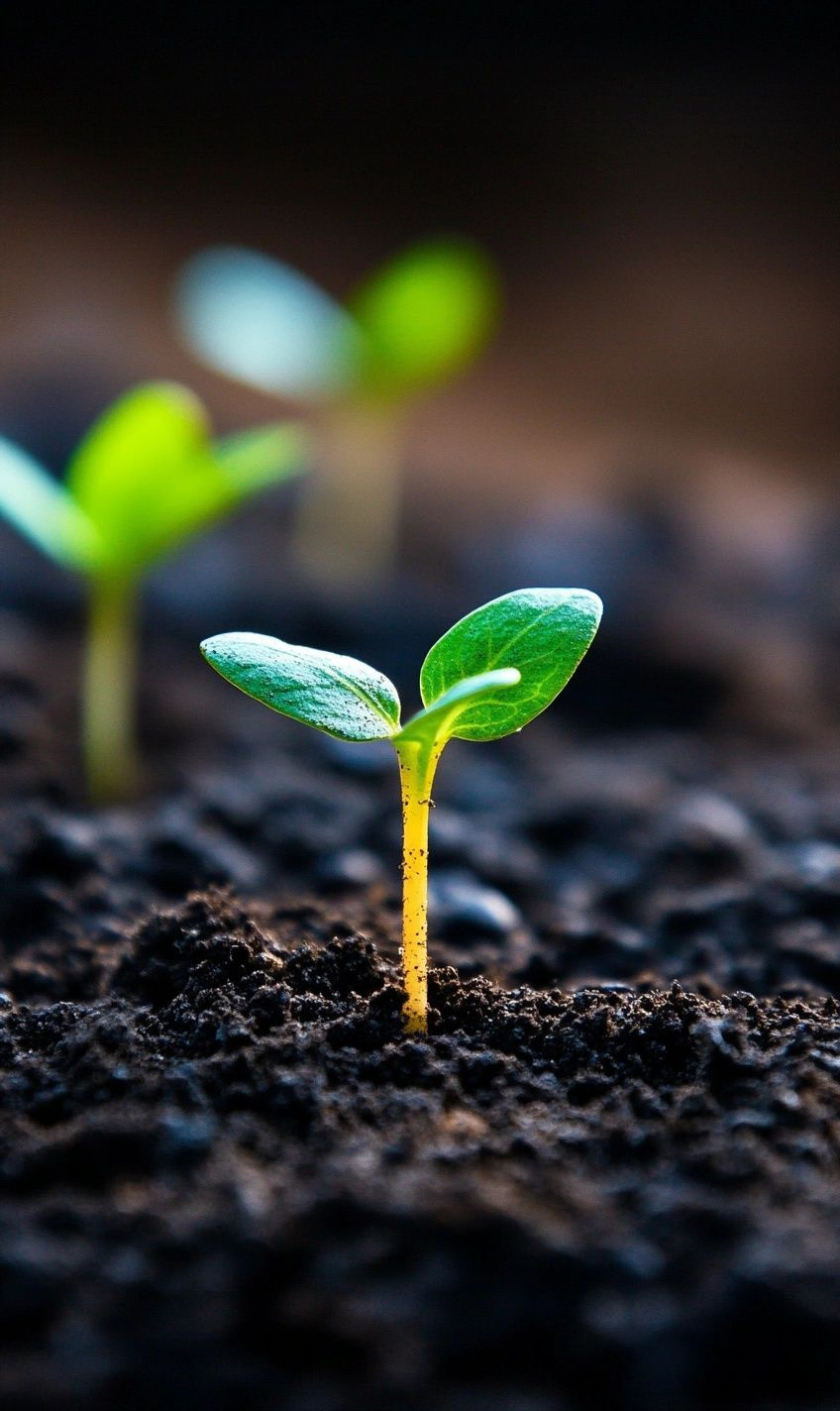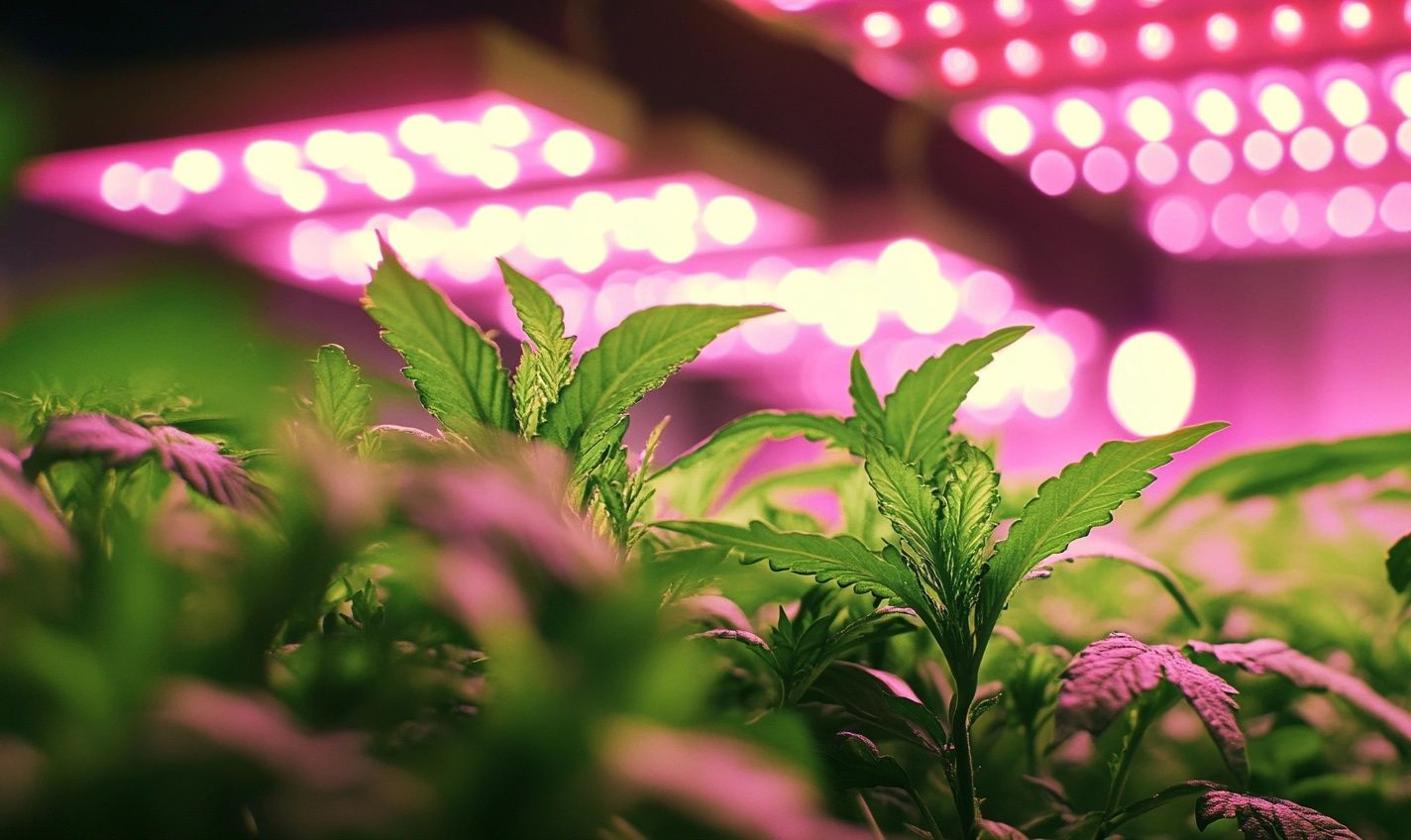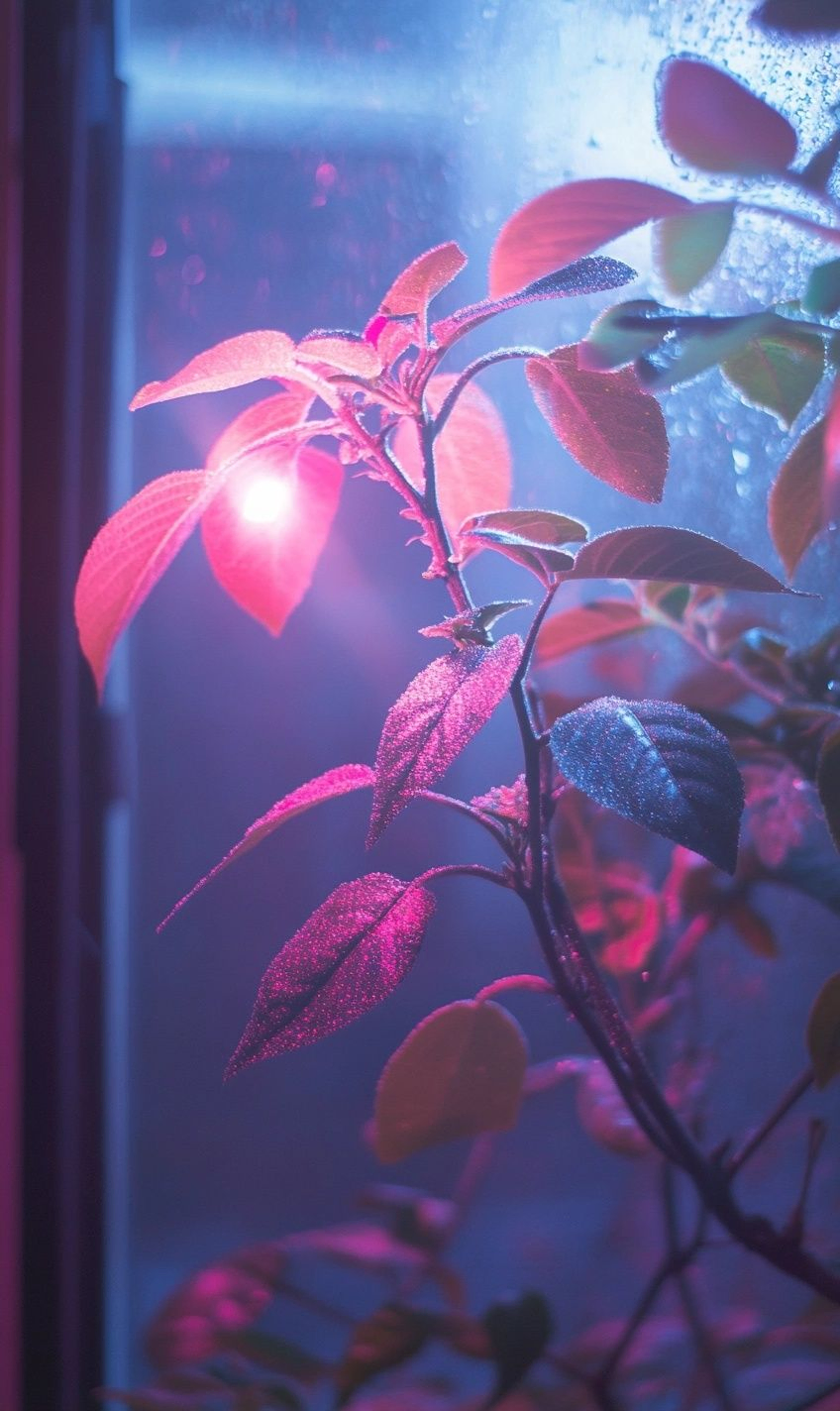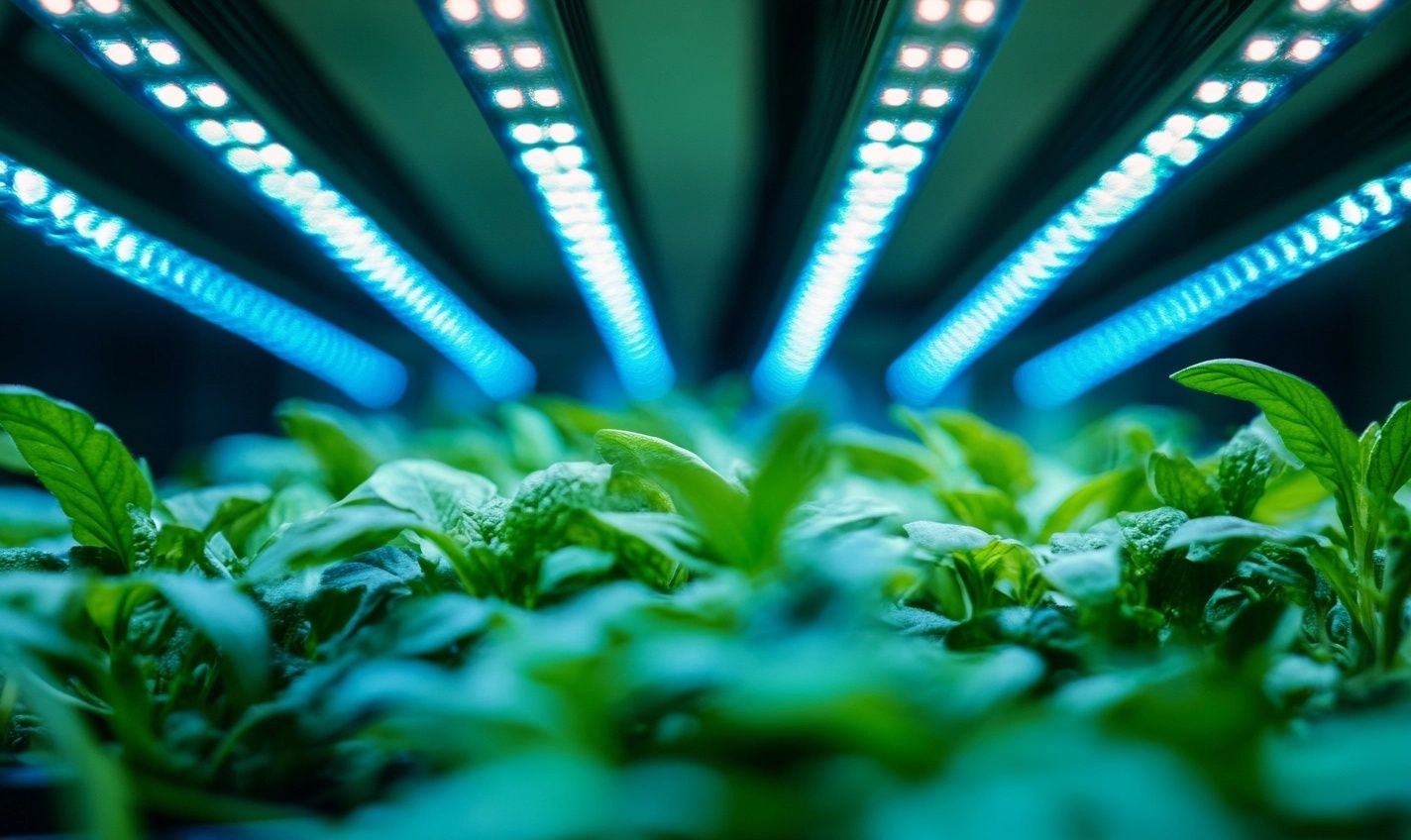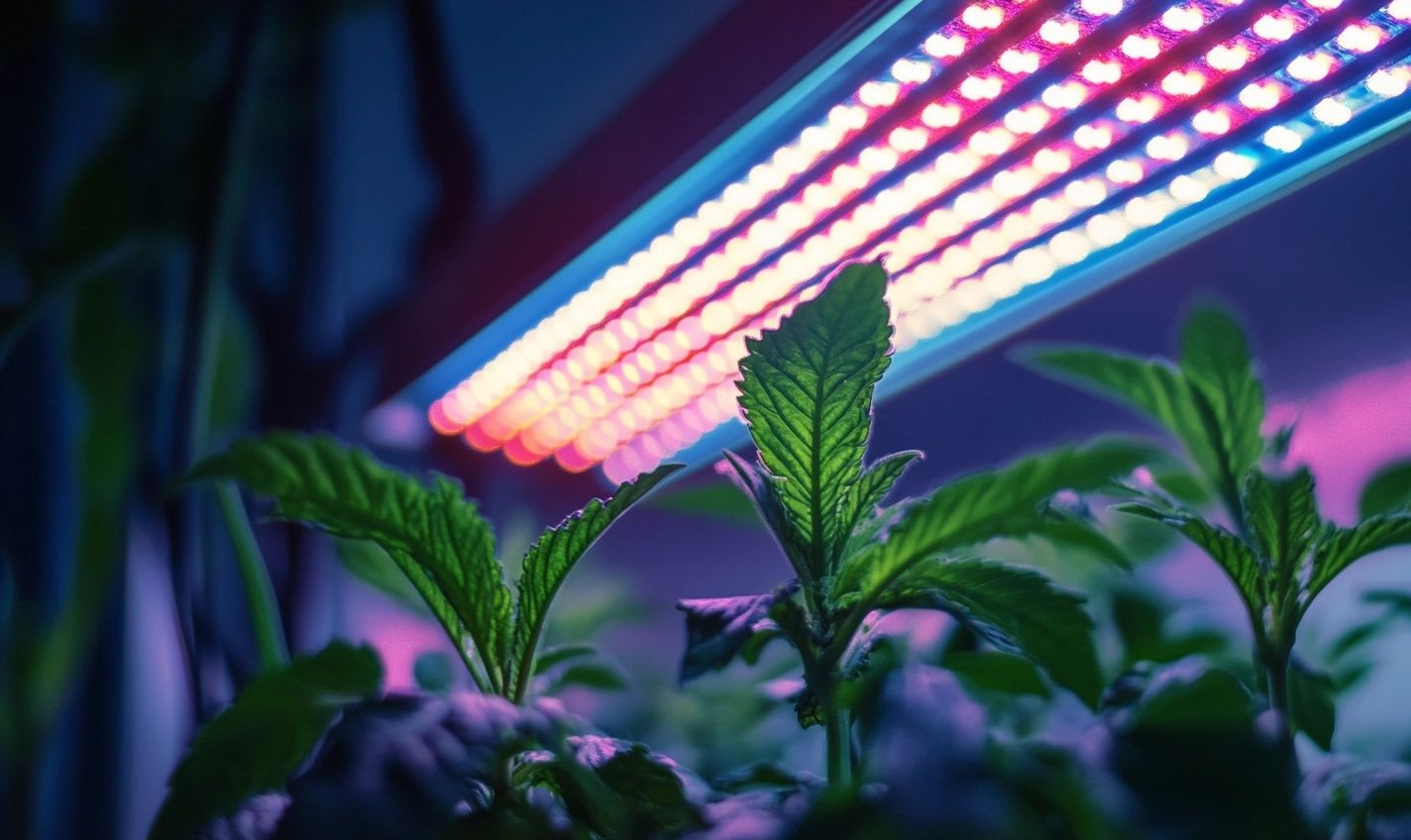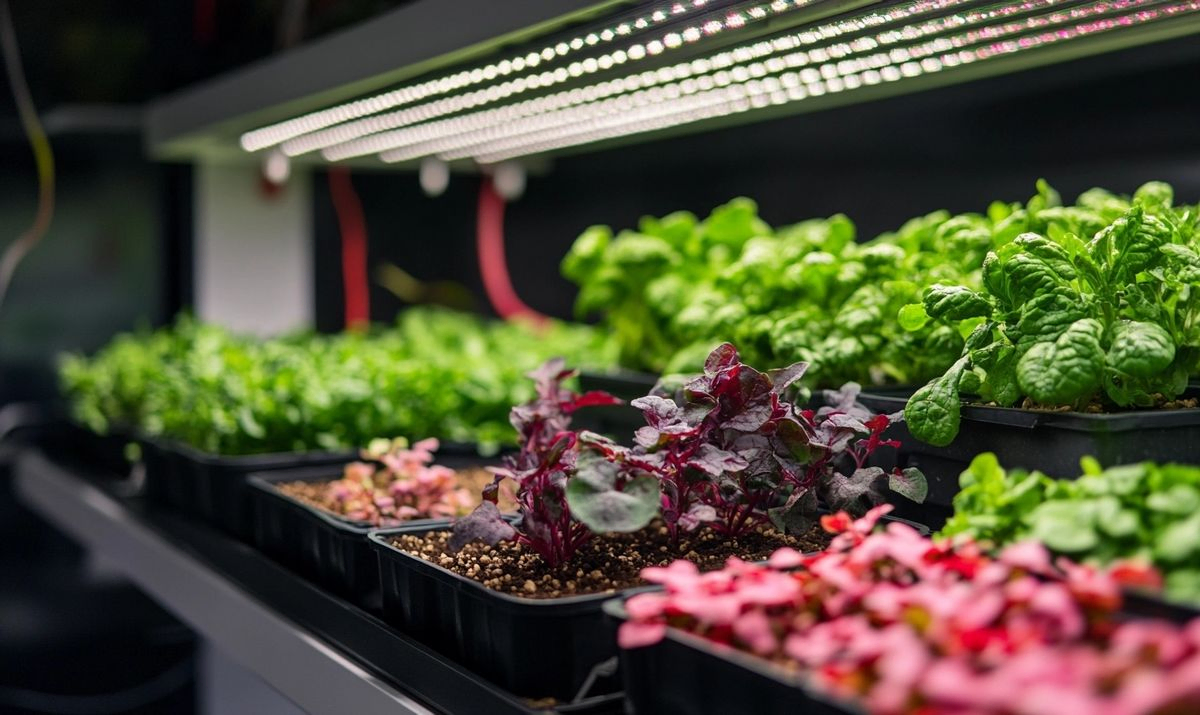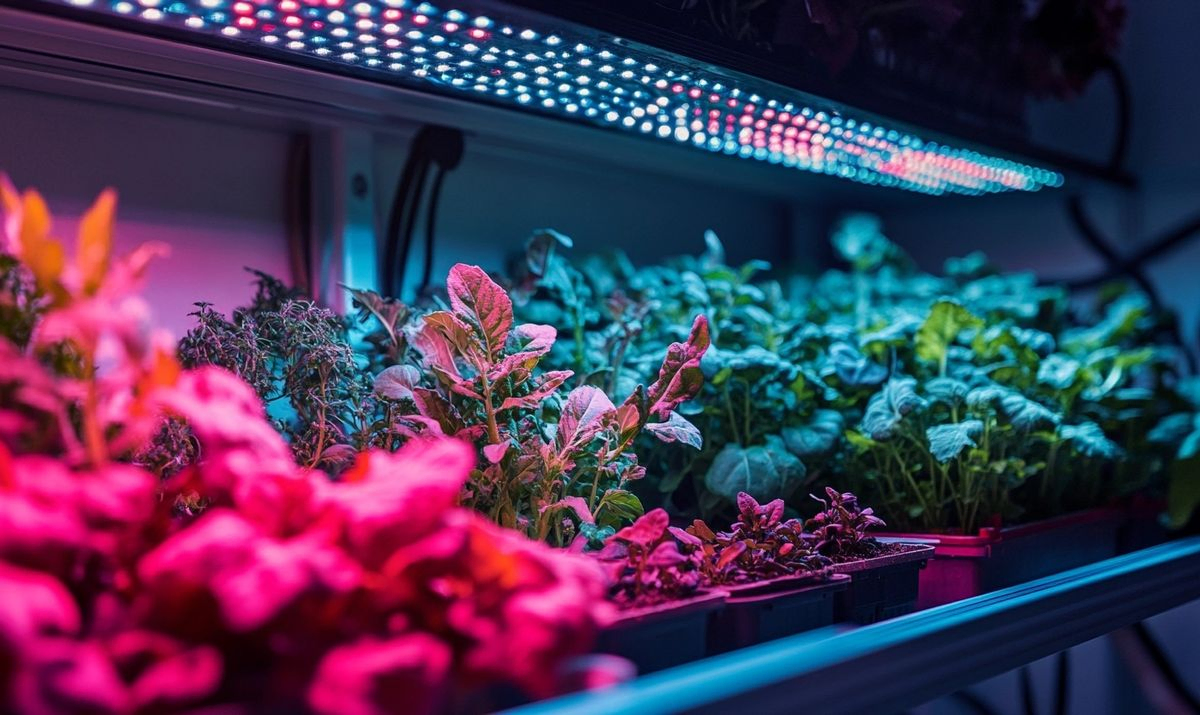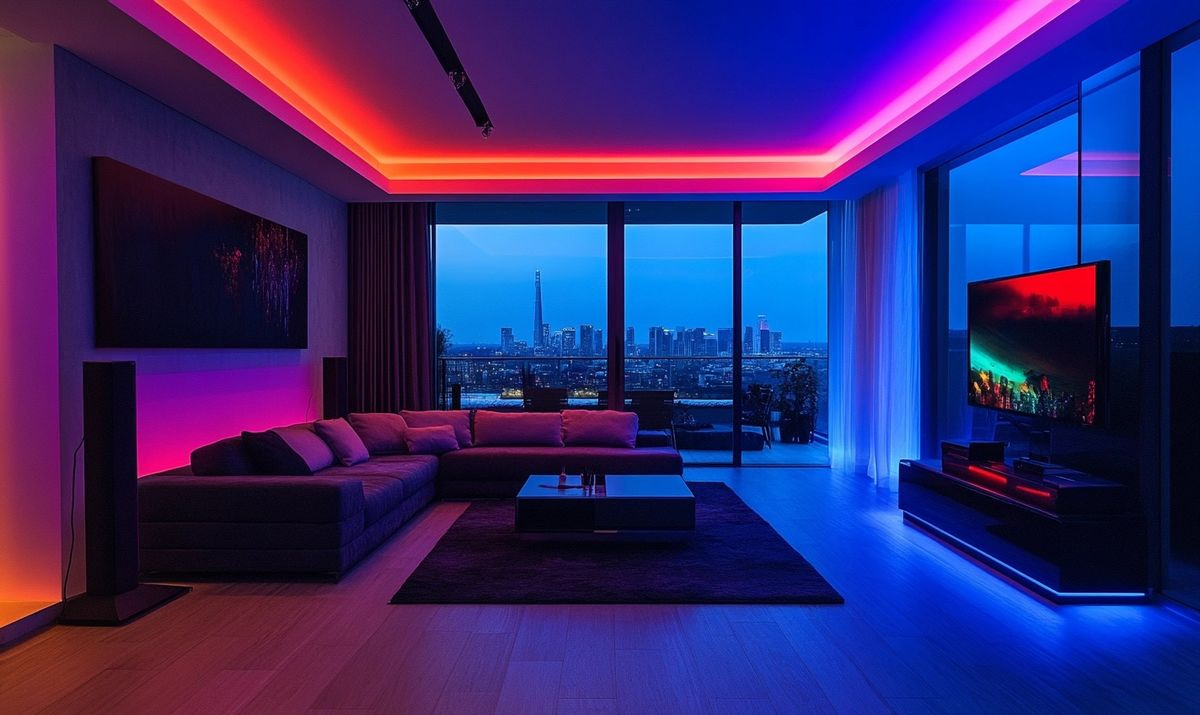Proper lighting can make all the difference in indoor gardening. Whether you’re a novice plant parent or a seasoned green thumb seeking to optimize your home grow, understanding how to choose a good LED and grow light is essential. With many options saturating the market, it’s easy to feel overwhelmed. But don’t fret; we’re here to illuminate your path.
LED grow lights are revolutionizing how we cultivate plants indoors, providing the perfect spectrum of light for photosynthesis. But how do you choose an LED to produce light that meets your plants’ unique needs? It’s all about knowing what to look for when buying an LED grow light. By considering factors such as light spectrum, wattage, and coverage area, you can create an ideal environment for your plants to thrive.
As we delve deeper into this topic, we’ll discuss each aspect of selecting the perfect indoor LED grow light. We’ll guide you on which LED grow light to buy based on plant type, growth stage, and space requirements. Let’s embark on this enlightening journey together and ensure your indoor garden flourishes!
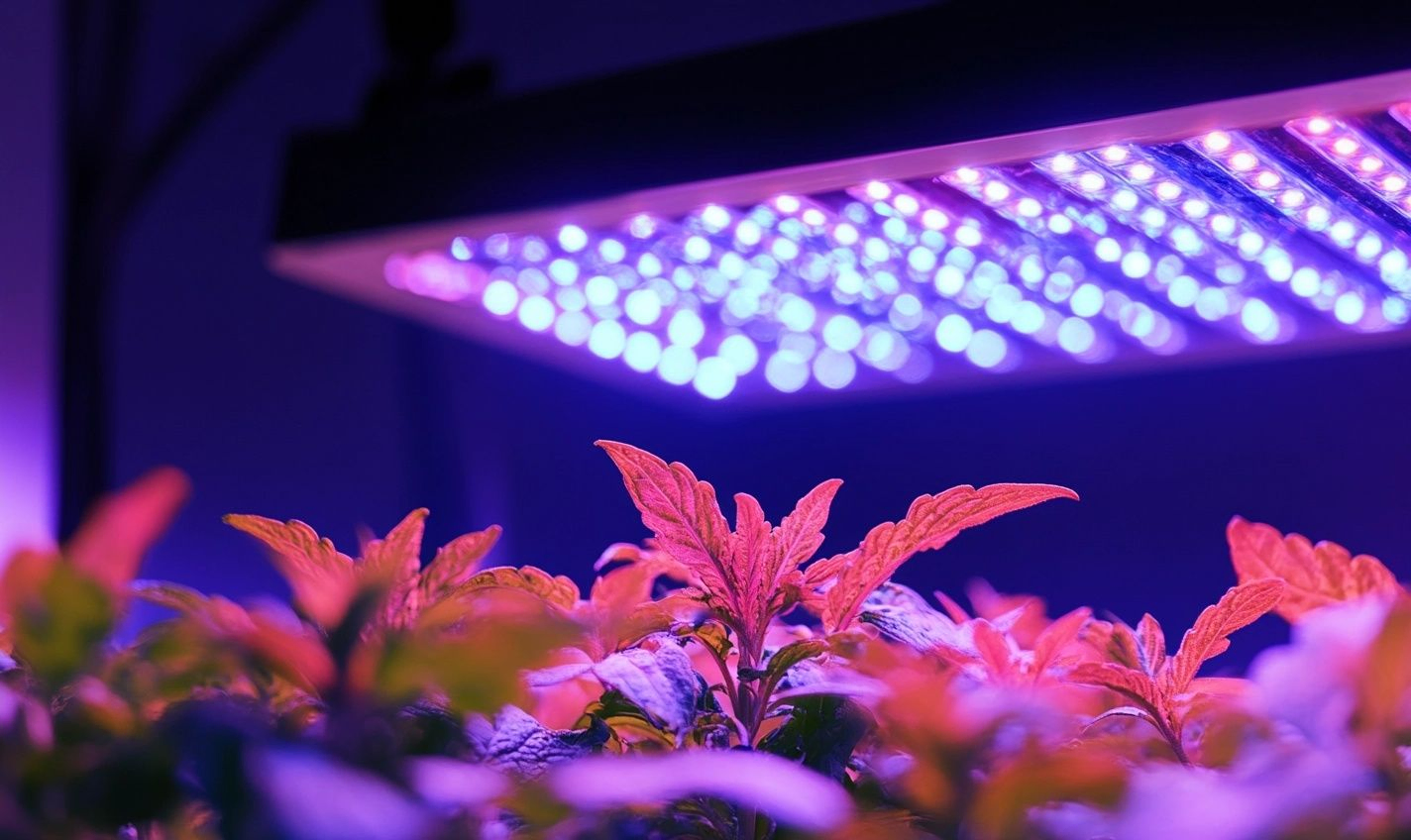
Understanding LED Grow Lights and Their Benefits
Choosing the right light can feel overwhelming for anyone diving into indoor gardening. You’re not just picking a bulb; you’re selecting the beating heart of your indoor garden. So, how do you choose an excellent LED to grow light? Let’s break it down together.
Why LED Grow Lights?
LED grow lights have become a favorite for many greenthumbs. They are energy-efficient, long-lasting, and versatile. It’s like having a mini sun right in your living space. Plus, they emit light in specific spectrums that help your plants thrive.
Key Benefits of Using LED Grow Lights
- Energy Efficiency: They consume less energy than traditional lights.
- Longevity: Expect a lifespan of up to 50,000 hours!
- Low Heat Emission: Your plants won’t get too hot.
- Customizable Spectrum: You can tailor the light to your plant’s needs.
What to Look for When Buying An LED Grow Light
When choosing An LED or grow light, consider a few factors. It’s like shopping for a new pair of shoes. You want the perfect fit that meets your style and needs.
Factors to Consider
- Wattage: Ensure the wattage meets your plants’ requirements.
- Spectrum: Check if it provides the full spectrum your plants crave.
- Coverage Area: Make sure it covers the space you’re working with.
- Type of Plants: Different plants have different lighting needs.
For instance, a light with a higher blue spectrum works wonders if you’re growing leafy greens. But if you’re after flowering plants, opt for something rich in the red spectrum.
Choosing the Right LED Grow Light for Your Space
How to choose an indoor LED grow light for your space will depend on several factors. Consider your ceiling height, the number of plants, and their growth stages. A tall plant might need stronger light from above, like lying on a sunlit beach, while seedlings enjoy a gentle touch.
So, are you ready to bring your indoor garden to life? You can find the perfect LED grow light for your space and plants with the proper knowledge. Happy gardening!
Factors to Consider When Choosing an LED Grow Light
Understanding Your Plants’ Needs
First, let’s think about what your plants need. Different plants have different light requirements. For instance, some love the bright sun, while others prefer a cozy shadow. When asking yourself how to choose an LED grow light, know if your greens are sun worshippers or shade lovers. It’s like picking the right outfit. You wouldn’t wear a winter coat in summer.
Light Spectrum Matters
When choosing an LED to grow, please pay attention to its spectrum. Think of it as the light’s flavor. Plants thrive on a mix of red and blue light. Red helps with flowering, while blue supports vegetative growth. Aim for a full-spectrum light if you want your plants to eat well.
Wattage: The Power Behind the Curtain
Next up is wattage. This is like the engine of your light. Too little wattage and your plants might starve for light; too much, and you’re throwing money or risking burns. Check the wattage requirements for your plant type. A good rule of thumb is:
- For seedlings: 20-30 watts per square foot.
- For vegging plants: 30-50 watts per square foot.
- For flowering plants: 50-75 watts per square foot.
Space and Size Consideration
Do you have a small closet or a spacious room? You’ll want to adjust your choice depending on your garden’s size. When choosing an indoor LED or grow light, measuring your space is essential! The right light should fit without cramping your plants’ style. A small space might only need a panel, while a big one might need a complete setup.
Budgeting Wisely
And then there’s the budget. While we all want the best for our plants, what to look for when buying an LED grow light includes balancing cost against features. Remember, a more expensive light might save you more energy bills in the long term. Think of it as an investment in your plant’s happiness!
Quality Over Quantity
Lastly, don’t just chase the numbers; check reviews! Read about which features work best and which lights are more reliable. It’s like asking friends for recommendations before a big meal. Which LED grow light to buy should come from trusted sources, not just flashy marketing! Stick to brands that have stood the test of time.

How to Choose a Good LED Grow Light for Different Plant Types
Understanding Your Plants’ Needs
Have you ever tried to grow plants indoors but felt like you were watering a bunch of sad little sticks? It’s time to change that! To truly thrive, your plants need the right light tailored to their needs. So, how do you choose a good LED grow light that sparks joy in your plant babies? Let’s dive in!
Light Requirements for Popular Plants
Different plants have different lighting needs. It’s like how some people love sunny beaches while others prefer cozy cabins. Here’s a quick cheat sheet:
- Leafy Greens (Spinach, Lettuce): Need about 12-14 hours of light daily. A lower wattage works for them!
- Fruit Bearing Plants (Tomatoes, Peppers): Crave high intensity. Go for at least 300 watts!
- Flowering Plants (Orchids, Bougainvillea): Appreciate a full light spectrum.
Light Spectrum and Plant Growth
Plants are pretty picky about colors. They soak up red and blue light the most. This is where the spectrum comes into play! A quality LED should provide both for balanced growth. Think of it like a balanced diet for your greens—too much of one thing isn’t good.
Size and Space Matters
You wouldn’t put a massive workout bench in a tiny apartment, right? The same goes for your LED grow light! Measure your space and pick the right size accordingly:
- Small Setup: Use a light up to 100W for a few herbs.
- Medium Space: Aim for 200-300W for a more extensive array of plants.
- Full Garden: If you want the jungle vibe, go big; 600W or more!
Choosing the Right Light Type
There’s a buffet of LED options out there! Do you want full-spectrum, or would you prefer a specific band? No worries, it’s all about what you plan to grow:
- Full Spectrum LEDs: Best for all-around growth.
- Vegetative LEDs: More for leafy greens.
- Bloom LEDs: Focused on flowering and fruiting.
So, which LED grow light should you buy? Consider your plants, space, and the light spectrum that fits your indoor garden. Your green friends will thank you, and trust me, watching them thrive is pure bliss!
What to Look for When Buying an LED Grow Light
So, you’re ready to dive into the world of indoor gardening, huh? Awesome choice! But wait—how do you choose an LED grow light that won’t leave your plants in the dark? Here’s a simple guide to help you navigate the luminous maze of options. Consider it like picking out the perfect outfit for a date; comfort, style, and fit are essential!
Light Spectrum: The Color Matters
Have you ever noticed how plants love sunlight? Well, they’re picky about their light, just like we are with our food. A good LED grow light should provide the right spectrum. Look for full-spectrum lights; they mimic natural sunlight and support every growth stage, from seedling to bloom.
Wattage: Power Up Your Plants
How bright is too bright? When sizing up the wattage, remember—more isn’t always better! For indoor plants, a general rule is 30 to 50 watts per square foot of growing space. Think of it as just enough energy to keep your plants happy without burning them out.
Efficiency: Save Some Green!
Investing in an LED grow energy-efficient light is a win-win! Look for models with a high PAR (Photosynthetically Active Radiation) output. High output means your plants can photosynthesize better, and you’ll save on that electric bill!
Size and Coverage: Don’t Leave Any Plant Behind
Imagine trying to squeeze into a crowded concert. Not fun, right? Similarly, your plants shouldn’t be squished under a small light. Ensure the grow light covers your entire plant area. Don’t forget—you can always hang lights higher or lower based on your space.
- Hanging Height: Adjustable heights help manage light intensity.
- Footprint: Ensure it covers your garden well.
Brand and Reviews: Do Your Homework!
Are you feeling overwhelmed? Don’t worry; you’re not alone! Check online reviews and recommendations. There’s nothing quite like hearing from fellow plant enthusiasts. Choose brands known for quality. Your plants deserve the best, don’t they?
When it boils down to it, picking the right LED to grow light is about aligning your needs with your plants’ preferences. Think of it as creating the ultimate growth party for them. And who wouldn’t want to be the life of the party?

Importance of Spectrum in LED Grow Lights
Understanding What Spectrum Means
The light spectrum is crucial when figuring out how to choose an LED to grow light. Why? Because plants thrive in specific light wavelengths. Just like a rainbow has different colors, light does too! And each of those colors plays a role in plant growth. So, what are you looking for?
Essential Light Spectrums for Plant Growth
When trying to decide how to choose a good LED grow light, focus on these critical spectrums:
- Blue Light: Helps plants with vegetative growth.
- Red Light: Encourages flowering and fruiting.
- Full Spectrum: Mimics natural sunlight, balancing all growth phases.
How Spectrum Affects Your Plants
Ever notice how some plants seem a bit limp? They might be crying out for a different light spectrum. Using the wrong band of light can lead to weak, leggy plants. It’s like wearing the wrong shoes for a marathon—you’re just not going to perform your best!
Finding the Right Spectrum Ratio
When you’re on a mission for what to look for when buying an LED grow light, search for those that offer adjustable spectrum options. Here’s a quick rundown:
- Seedling Stage: More blue light will help them grow strong.
- Veg Stage: A balanced spectrum with bluer still works wonders.
- Flowering Stage: Shift to red light for blooming beauties!
Why It Matters for Indoor Gardens
Consider your indoor setup, especially when choosing an indoor LED grow light. Do you have limited sunlight? The right spectrum would support healthy growth. A full-spectrum light may feel like sunshine on a cloudy day for your plants!
The spectrum is not just a fancy term—it’s the lifeblood of successful indoor gardening. So, mix it up, play with those light settings, and watch your garden flourish! The right spectrum doesn’t just grow plants; it nurtures your green thumb. 🌿
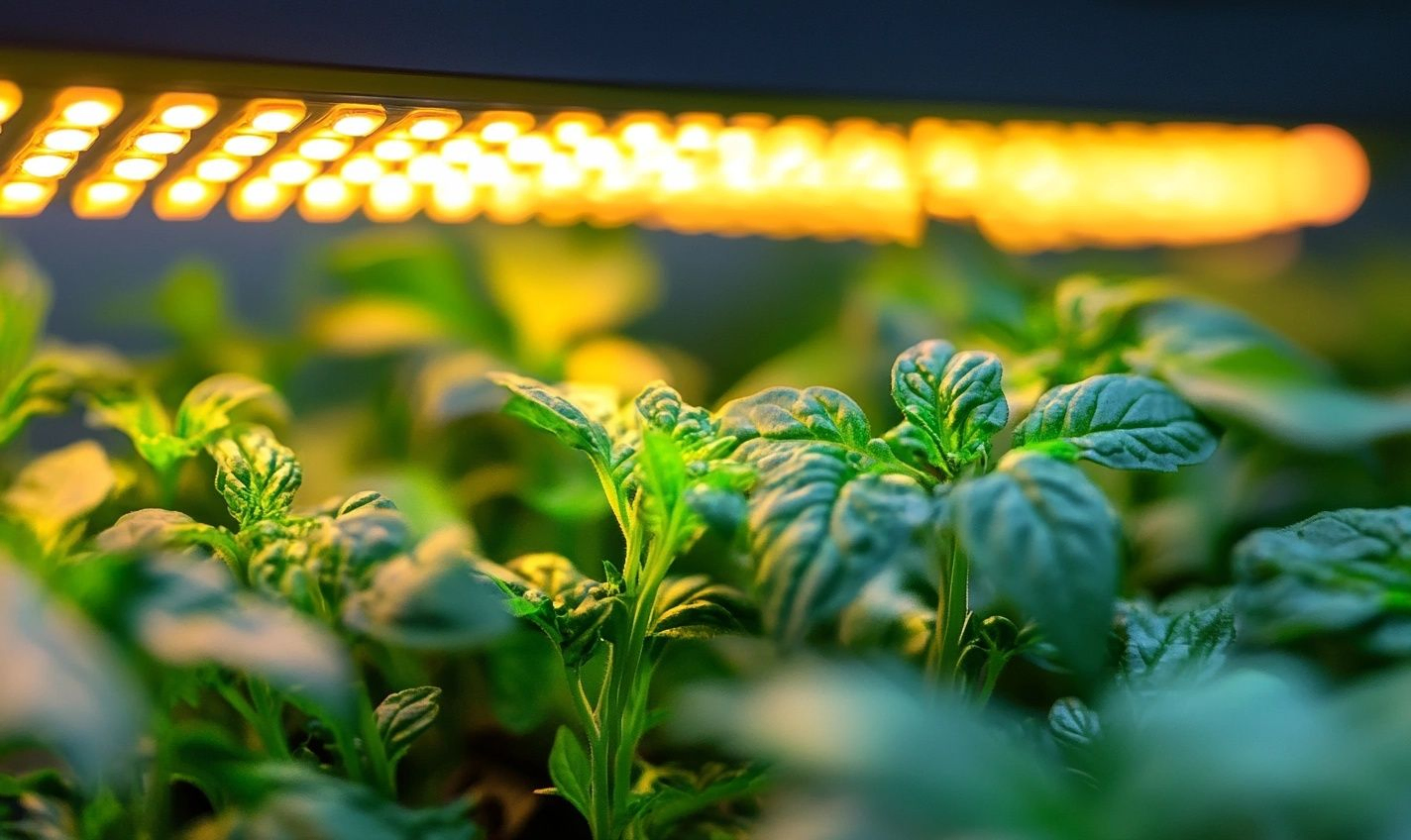
Determining the Right Wattage for Your Indoor Garden
Why Wattage Matters
Choosing the correct wattage for your LED grow light is like picking the perfect pair of shoes. If they are too small, they will squeeze; if they are too big, they will slip off. You want to find that sweet spot!
General Wattage Guidelines
So, how do you choose a good LED grow light with the correct wattage? First, let’s break down the basics. A good rule of thumb is:
- Aim for about 20-30 watts per square foot for flower growth.
- Around 10-15 watts per square foot for leafy greens will do.
- If you’re raising fruiting plants, go with the higher end of the spectrum.
Understanding Plant Needs
Different plants have unique wattage demands. Think of your plants as athletes. Some need a light warm-up, while others crave a full-on workout!
Here’s a quick list to guide you:
- Herbs: 10-15 watts/sq ft
- Seedlings: 20-30 watts/sq ft
- Vegetables: 25-40 watts/sq ft
Distance from Light Source
Distance is crucial, too. Imagine baking a cake; if it’s too close to the oven, it burns. Likewise, if your light is too far, your plants won’t thrive. Generally, keep your LED grow lights:
- 12-24 inches above seedlings.
- 24-36 inches above flourishing plants.
Over or Under Wattage – What’s the Deal?
Over-wattage can lead to crispy leaves. Think of it as frying your favorite food. Nobody wants that! Conversely, under-wattage might leave your plants weak and leggy, like trying to run a marathon on half an hour of sleep.
Testing and Adjusting
It’s okay to experiment! Start with a wattage that feels right—keep an eye on your plants. Are they healthy? Growing? Adjust accordingly. And remember, you’re watering and nurturing living beings. 💚
Final Thoughts
Figuring out wattage is like tuning a guitar. It takes time, patience, and a little trial and error.

How to Choose an Indoor LED Grow Light Based on Your Space
Finding the perfect indoor LED grow light is like shopping for a new car. There are so many options that it can be a bit overwhelming! But let’s break it down. How do you choose an excellent LED to grow light for your specific setup?
Assess Your Growing Area
First things first, measure your space. Are you working with a tiny closet or a whole room? The light you choose should fit your area like a glove. Remember:
- Small spaces: Look for compact, high-intensity lights.
- Large spaces: Consider using multiple lights for even coverage.
Think about height, too. Plants can grow tall fast. If your ceiling is low, you might need a light that can be adjusted quickly.
Consider Your Plant Type
And what about the plants you’re growing? Some love the spotlight, while others prefer a softer glow. If you’re asking yourself, “How do I choose an LED grow light that suits my plants?” then pay attention to their needs. For example:
- Leafy greens: Typically need less light.
- Flowering plants: Thrive in high light intensity.
It’s all about knowing what makes your plants tick! Just like us, they thrive in their happy place.
Light Spectrum Matters
Are you rolling your eyes at the technical jargon? Don’t sweat it. Just know this: different plants respond to different light wavelengths. If you’re wondering how to choose the right spectrum, think of it like cooking. You wouldn’t toss just any spice into every dish, right?
A full-spectrum light covers all the growth stages. They’re like all-rounders in gardening! They support early growth to full bloom. So, when you’re deciding what to look for when buying an LED grow light, consider how it fits into your plant’s life cycle.
Energy Efficiency is Key
And finally, let’s talk about the bills. Electrical costs can sneak up on you like a surprise guest! Look for energy-efficient lights. They save you dollars while keeping your plants happy. You want something that won’t eat away at your budget!
So, whether you’re a novice or a pro gardener, the choices can feel daunting. But narrow it down by assessing your space, plant needs, and light specifics, and you’ll be well on your way to finding the ideal indoor LED grow light for your precious plants!
Comparing Different Types of LED Grow Lights
What’s Out There?
When it comes to LED grow lights, the choices can feel overwhelming. You’ve got your full-spectrum lights, CFLs, HID lights, and even some fancy intelligent lights! Each one has its unique benefits. But which one should you choose? Let’s break it down.
Full-Spectrum LED Grow Lights
Full-spectrum LED grow lights are like a buffet for your plants. They emit a wide range of wavelengths, simulating natural sunlight. This means your plants get everything they need to grow strong and healthy. Think of it as giving your plants a mini vacation in the sun—without the sunscreen.
- Great for all plant stages.
- Energy-efficient, saving you some bucks.
- Suitable for indoor gardening throughout the year.
COB LED Grow Lights
COB (Chip on Board) LED lights take things up a notch. They pack a punch with higher intensity and better penetration. Perfect for those who want to grow hefty plants. They’re the heavyweights of the bunch, making sure every inch of your garden gets the love it deserves.
Quantum Board LED Grow Lights
A quantum board might be your best friend if you’re after efficiency. They distribute light evenly, ensuring no spot in your grow space is left in the dark. Plus, they produce less heat, so your plants stay cozy without breaking a sweat.
Budget-Friendly Options
Are you looking to save a few bucks? CFL grow lights might be your go-to. They don’t have the oomph of other options, but they’re perfect for newbies or smaller setups. Think of them as the gateway drug to indoor gardening. You start small, and then, the sky’s the limit!
LED Grow Light Features to Consider
Remember, it’s not just about the type. You also need to think about features like:
- Wattage: More watts usually mean more light.
- Heat output: Less heat means happy plants.
- Lifespan: Look for longevity so you don’t have to replace them often.
So, which type of LED grow light to buy? It depends on what you’re growing and your budget. Just remember that the right light can make all the difference between a shriveled plant and a flourishing one. Happy growing!
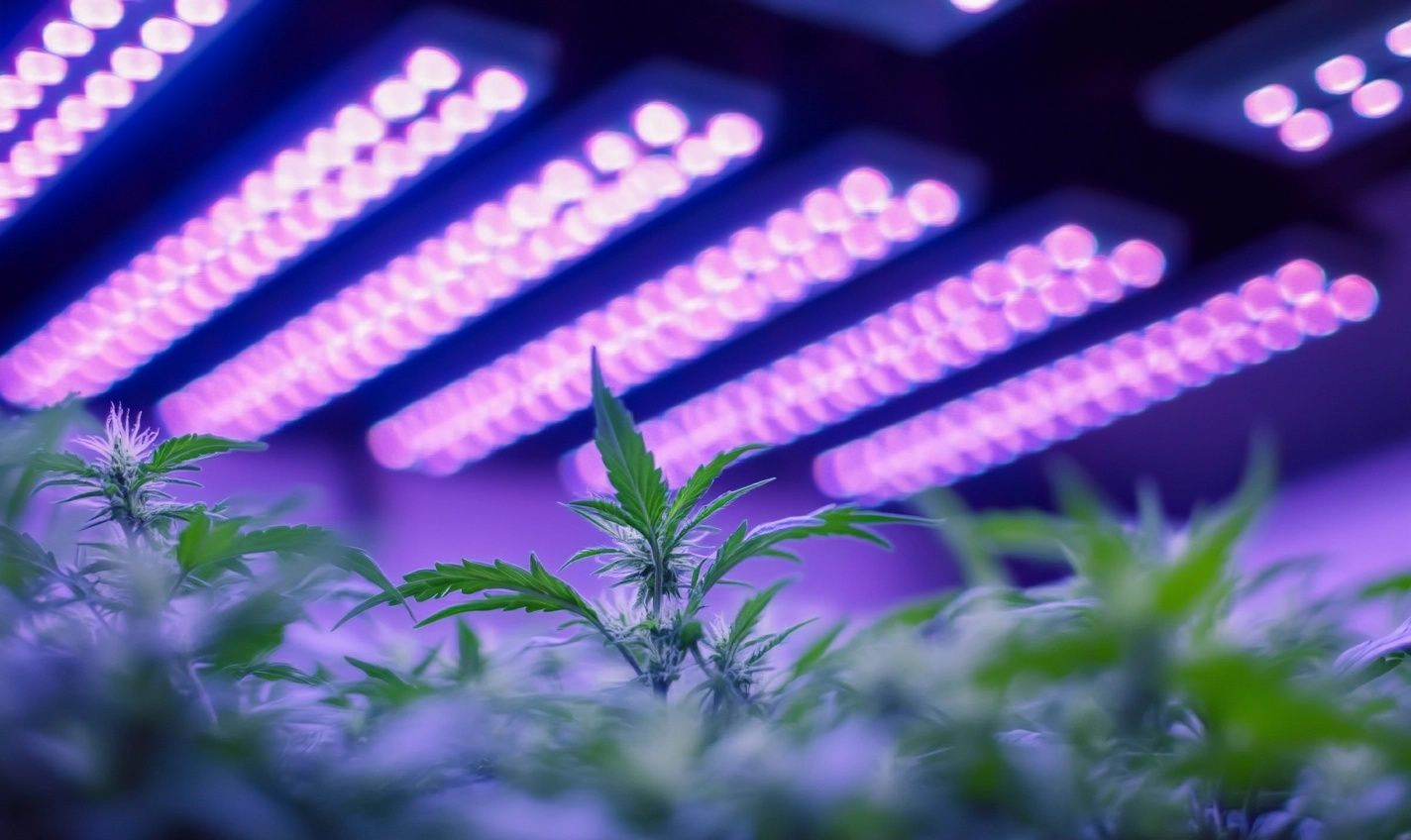
Understanding PAR and PPFD for Optimal Plant Growth
When choosing the correct LED and grow light, understanding PAR and PPFD can feel like decoding an alien language. But don’t worry, it’s much easier than it sounds!
What’s PAR, Anyway?
PAR, or Photosynthetically Active Radiation, is like the buffet of light that your plants can’t resist. It refers to the light spectrum that plants use for photosynthesis, generally in the range of 400-700 nm. This is where your plants go to town, soaking up that light energy.
Enter PPFD
Now, let’s talk about PPFD (Photosynthetic Photon Flux Density). Think of PPFD as the number of “light snacks” available for your plants each second. It’s measured in micromoles per square meter per second (µmol/m²/s). Higher PPFD means more light energy for your green friends to munch on, leading to more robust growth.
Why Should You Care?
Understanding these concepts helps you choose a good LED grow light that meets your plants’ needs. But why is that important?
- It saves you money. More efficient lights mean less electricity usage.
- Your plants will grow faster and healthier. Who doesn’t want flourishing greens?
- You can avoid common pitfalls like leggy plants or poor yields!
Look for lights that offer the correct PAR output for your specific plants when shopping. Different plants have different light needs. Just like toddlers and teenagers eat differently, your plants do, too!
Finding the Right Balance
Here’s a quick checklist to help you out:
- Check the PAR output range. For flowering plants, aim for higher values.
- Consider the PPFD levels. Aim for around 400-600 µmol/m²/s for most plants.
- Don’t forget to assess the coverage area. Size does matter when it comes to LED grow lights!
And remember, it’s not just about choosing an LED to grow light. You’re choosing a partner for your plant care journey! Need more light? Sometimes, adding more fixtures or adjusting their height can make all the difference.
So, next time you’re wondering, “Which LED grow light should you buy?” think about PAR and PPFD as your allies in the quest for thriving plants. Get it right, and you won’t just be a gardener but a plant superhero!
Energy Efficiency and Cost Considerations
Finding the Right Balance
When choosing an LED to grow light, energy efficiency might be at the top of your list. After all, those electric bills can creep up if you’re not careful! But don’t worry—it’s not just about saving a few bucks; it’s about keeping your plants happy, too!
Why Energy Efficiency Matters
Think of an LED grow light as your plant’s sunlit best friend. The more energy-efficient it is, the more energy you save without compromising growth. This means you can increase your mini-jungle without feeling guilty about the power bill at the end of the month.
What to Look For
So, what should you consider? Here’s a quick checklist:
- Wattage: Lower wattage can mean lower costs if you choose an efficient model.
- Type of LED: Full-spectrum lights might cost more initially but can save you money in the long run.
- Heat Output: Less heat means less need for cooling, which can lower energy use!
Cost-Effectiveness Over Time
Have you ever heard the saying, “You get what you pay for?” It holds here! Investing in a high-quality LED grow light can seem expensive, but think of it as planting seeds for future savings. The longer lifespan of these lights leads to fewer replacements and better plant growth.
Comparing Costs
Here’s a simple way to think about costs:
- Initial Purchase: Expensive but worth it if the light lasts years.
- Electricity Use: Calculate the wattage and your local rates (do you want to pay more for poor-quality light?).
- Results: Healthier plants can lead to better yields—more is more!
Conclusion – The Balancing Act
Finding the right balance between energy efficiency and initial costs is crucial. Each light is different, but with some research and intelligent choices, you’ll be well on your way to making an informed decision. Remember, your plants are counting on you, so make every watt count!
Reviews and Recommendations: Which LED Grow Light to Buy
Top Picks for Different Needs
So, you’re wondering which LED grow light to buy for your green pals? Let’s break it down to plant enthusiast style! It’s like picking the best plant sunspot, but way more fun.
Best Overall LED Grow Light
For a solid all-rounder, check out the Spider Farmer SF-1000. It’s perfect for beginners and pros alike. Its full spectrum mimics natural sunlight, making it ideal for various plants. Plus, the energy efficiency is off the charts! It’s like getting the best of both worlds—great light and a small energy bill!
Budget-Friendly Option
The Phlizon 600W is your go-to choice if you’re watching your wallet. It’s got your basic spectrum needs covered without breaking the bank. You won’t be sacrificing quality here, either. Think of it as the ‘happy meal’ of LED grow lights—affordable and satisfying!
High-Tech Choice
I recommend the California Light Works SolarXtreme 500 if you want to geek out. This bad boy has programmable features that adjust the spectrum based on your plant’s growth stage. It’s like having a personal greenhouse assistant without awkward conversations!
Features to Consider
When deciding how to choose an LED grow light, remember some key features:
- Spectrum Quality: Full spectrum is a must for healthy growth.
- Wattage: Match it to your plant type and space size.
- Heat Output: Lower heat means happier plants!
- Durability: Look for quality materials that last.
Your Space Matters
Are you wondering how to choose an indoor LED to grow light for your space? Measure your area and match the light size accordingly. Small corner plants need less intense lights. Think cozy cafés rather than sprawling botanical gardens!
Final Thoughts on Reviews
Buying an LED grow light doesn’t have to be overwhelming. From technology to budget, there’s something out there for everyone. Just think about your plants’ needs, space, and budget! It’s all about creating that perfect atmosphere for your leafy friends. Happy growing!
Conclusion
Choosing the right LED grow light is crucial for your plants’ optimal growth and health. Whether you are a hobbyist or a seasoned gardener, understanding how to choose a good LED grow light sets the foundation for thriving indoor gardens. Factors like spectrum, intensity, coverage area, and efficiency should be at the forefront of your decision-making process.
Additionally, considering your specific plant types and growth stages will help you make an informed choice. Always take your time to research and compare different products to uncover what to look for when buying an LED grow light. Remember, the right light can significantly impact your plants’ development and yield, making your investment worthwhile.
Ultimately, as you navigate through options, you’ll find that understanding how to choose an LED grow light, particularly for indoor gardening, empowers you to create the perfect environment for your greenery. With the proper knowledge, you’ll achieve lush plant growth and enjoy a rewarding and fruitful gardening experience. Happy growing!
Frequently Asked Questions (FAQs)
What should I consider when choosing an excellent LED to grow light?
When selecting a good LED grow light, consider the type of plants you’ll grow, the size of your growing area, light spectrum, energy efficiency, and heat output.
How do I choose an LED to grow light for specific plants?
Different plants have various light needs. Research the light spectrum required for your specific plants, and choose a light that covers that range.
What is the best way to choose an LED to grow light?
Evaluate factors like the wattage, light intensity, and coverage area to find the best LED grow light for your needs.
What are the critical differences in choosing an indoor LED to grow lights?
Indoor grow lights must provide a full spectrum while considering the space’s dimensions and ventilation needs, unlike outdoor grow lights that use natural sunlight.
What should you look for when buying an LED grow light?
Look for features like adjustable brightness, energy efficiency ratings, light spectrum compatibility, and heat production reviews.
Which LED grow light should beginners buy?
Consider a full-spectrum LED with easy setup and adjustable settings. Also, check for user-friendly features that help beginners adjust the light as needed.
How much wattage do I need for LED grow lights?
A good rule of thumb is to provide 20-30 watts per square foot of grow space for optimal results, depending on the type of plants being cultivated.
Do I need different lights for different growth stages?
Yes, plants may require different light spectrums for different stages—typically blue light for vegetative growth and red light for flowering.


